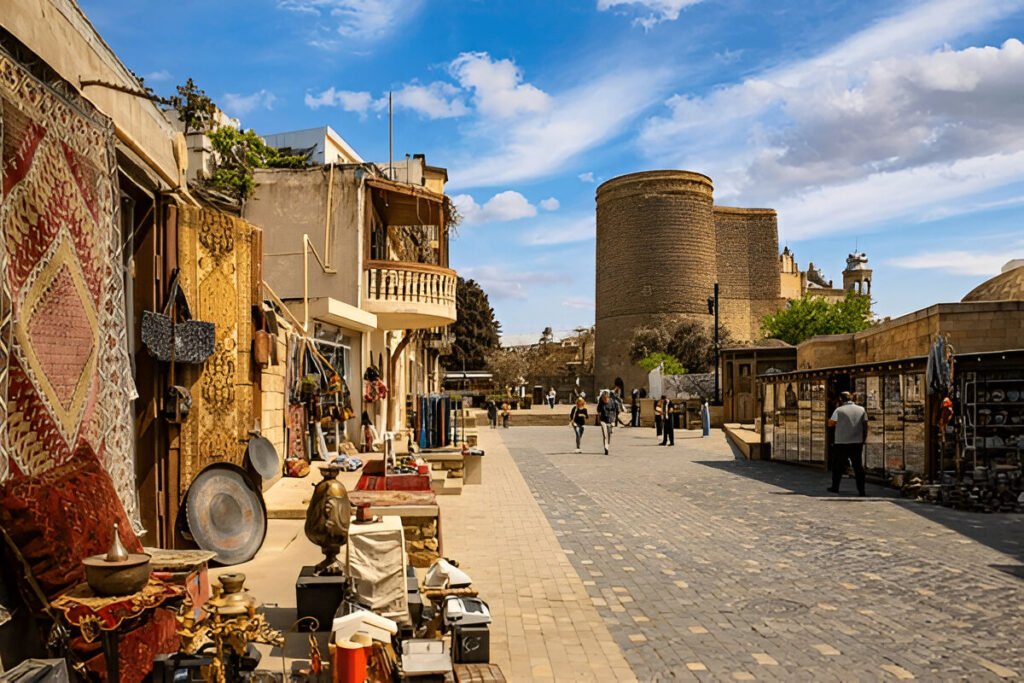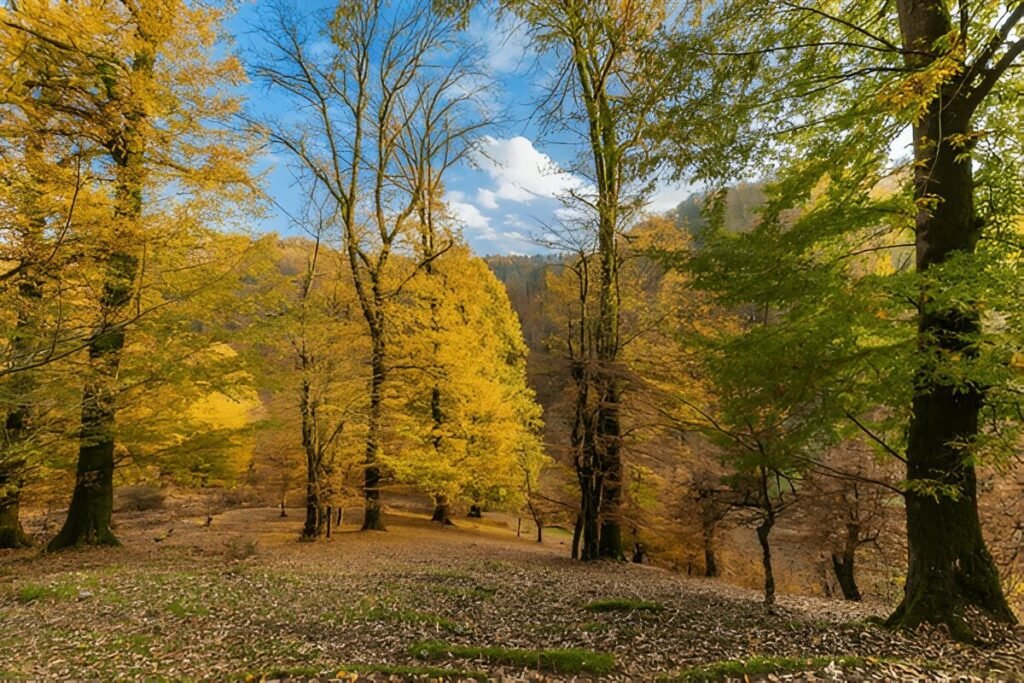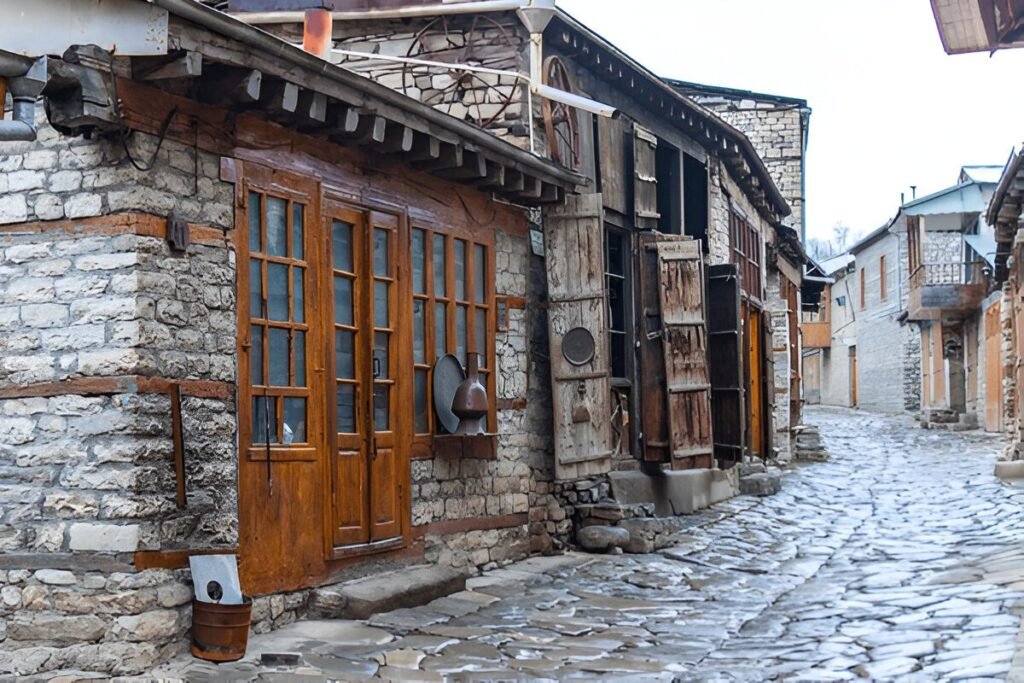Introduction
Azerbaijan, the “Land of Fire,” is a country where ancient history meets modern innovation. Its rich cultural heritage and diverse landscapes have earned the country several UNESCO World Heritage recognitions. From medieval architecture to stunning natural wonders, these sites reflect Azerbaijan’s unique identity as a crossroads of civilizations. In this blog, we will explore Azerbaijan’s UNESCO World Heritage Sites, highlighting their historical significance and why they deserve a spot on your travel itinerary.
What Are UNESCO World Heritage Sites?
The UNESCO World Heritage list includes cultural, natural, and mixed sites of outstanding value to humanity. By designating these sites, UNESCO aims to protect and promote them for future generations while encouraging sustainable tourism. Azerbaijan’s inclusion in this prestigious list underscores its cultural and historical importance.
Azerbaijan’s UNESCO World Heritage Sites

1. Walled City of Baku with the Shirvanshah’s Palace and Maiden Tower
- Location: Baku, the capital city
- Designation Year: 2000
The Walled City of Baku, also known as Icherisheher, is Azerbaijan’s first UNESCO-recognized site. This ancient urban core is a labyrinth of narrow streets, historic buildings, and cultural landmarks.
- Shirvanshah’s Palace:
Built during the 15th century, this architectural masterpiece served as the royal residence of the Shirvanshah dynasty. The palace complex includes a mosque, a mausoleum, and a bathhouse, showcasing the region’s medieval Islamic architecture. - Maiden Tower:
Dating back to the 12th century, this enigmatic structure remains a symbol of Baku. The tower’s purpose is still debated, with theories ranging from a Zoroastrian fire temple to a defensive fortress. Visitors can climb to the top for panoramic views of the city and the Caspian Sea.
Why Visit?
The Walled City of Baku offers a glimpse into Azerbaijan’s medieval past while blending seamlessly with the modern skyline of the capital. It’s a must-see for history buffs and architecture enthusiasts.
2. Gobustan Rock Art Cultural Landscape
- Location: Gobustan, 64 kilometers southwest of Baku
- Designation Year: 2007
Gobustan is a treasure trove of prehistoric rock carvings, with over 6,000 petroglyphs depicting scenes of daily life, hunting, and rituals. These carvings date back to the Upper Paleolithic era, making Gobustan one of the world’s most significant archaeological sites.
- Interactive Museum:
The Gobustan Museum uses cutting-edge technology to provide insights into the lives of the ancient inhabitants. Interactive displays and virtual reconstructions make the experience educational and engaging. - Mud Volcanoes:
Gobustan is also famous for its mud volcanoes, natural phenomena that add a unique geological dimension to the site.
Why Visit?
Gobustan offers a rare opportunity to step back in time and witness the artistic expressions of early humans. Its combination of cultural and natural wonders makes it a truly unique destination.
3. Sheki Khan’s Palace and the Historic Centre of Sheki
- Location: Sheki, northwest Azerbaijan
- Designation Year: 2019
The Sheki Khan’s Palace is an architectural marvel and a centerpiece of the historic Sheki region. Built in 1762 as a summer residence for the Sheki khans, the palace is renowned for its intricate craftsmanship.
- Architectural Features:
The palace’s facade is adorned with stunning stained-glass windows, called “shebeke,” made without nails or glue. Inside, vibrant frescoes depict floral and hunting scenes, showcasing the artistic excellence of the era. - Historic Centre of Sheki:
Surrounding the palace, the old town of Sheki is a charming area filled with cobbled streets, traditional houses, and caravanserais, reflecting its importance as a Silk Road hub.
Why Visit?
Sheki is a perfect blend of history, art, and natural beauty. The palace and its surroundings offer a window into Azerbaijan’s rich cultural heritage and Silk Road legacy.
4. The Landscape of the Hirkan Forests (Tentative List)
- Location: Southeastern Azerbaijan
- Significance: A potential UNESCO World Heritage natural site
Although not yet officially listed, the Hirkan Forests are on UNESCO’s tentative list, reflecting their ecological significance. These ancient forests are home to rare and endemic species, including the Persian leopard and the Hirkanian tiger (extinct in the wild).
- Biodiversity:
The forests host over 150 tree species, making them one of the most biodiverse areas in the Caucasus. - Cultural Importance:
The forest is intertwined with Azerbaijani folklore, often serving as a backdrop for traditional tales and legends.
Why Visit?
Nature lovers and eco-tourists will appreciate the Hirkan Forests for their untouched beauty and the chance to explore one of the world’s oldest ecosystems.
5. The Silk Roads: Zarafshan-Karakum Corridor (Partially Recognized)
- Significance: Azerbaijan’s role in the historic Silk Road trade network
While the Silk Road as a whole is recognized by UNESCO, individual routes and contributions by regions like Azerbaijan are also gaining attention. Cities such as Shamakhi, Ganja, and Baku were key trading hubs connecting East and West.
- Caravanserais:
These roadside inns, such as the ones in Sheki and Baku, provided rest and trade opportunities for Silk Road merchants. - Cultural Exchange:
The Silk Road facilitated not just trade but also the exchange of ideas, technologies, and cultures, shaping Azerbaijan into the diverse nation it is today.
Why Visit?
Exploring Azerbaijan’s Silk Road sites offers insight into the country’s historical importance as a bridge between civilizations.
Why Azerbaijan’s UNESCO Sites Matter

- Cultural Identity:
These sites celebrate Azerbaijan’s unique heritage and its role as a melting pot of cultures. - Tourism and Economy:
UNESCO recognition has boosted tourism, contributing to economic growth and encouraging preservation efforts. - Global Recognition:
By earning UNESCO designations, Azerbaijan positions itself as a key cultural and historical destination on the global map.
How to Visit Azerbaijan’s UNESCO Sites

- Best Time to Visit:
Spring (April to June) and autumn (September to November) offer pleasant weather for exploring outdoor sites. - Getting Around:
Baku serves as a gateway to most UNESCO sites, with convenient transport options such as buses, trains, and private tours. - Guided Tours:
Hiring a local guide can enhance your experience, providing historical context and insider knowledge.
Conclusion
Azerbaijan’s UNESCO World Heritage Sites are more than just tourist attractions—they are living testaments to the country’s rich history, artistic achievements, and natural wonders. From the medieval charm of Icherisheher to the prehistoric artistry of Gobustan, these sites offer something for every traveler.
Visiting these landmarks is not only a journey through Azerbaijan’s past but also an opportunity to appreciate its enduring contributions to global heritage. Whether you’re a history enthusiast, nature lover, or cultural explorer, Azerbaijan’s UNESCO sites promise an unforgettable experience.












